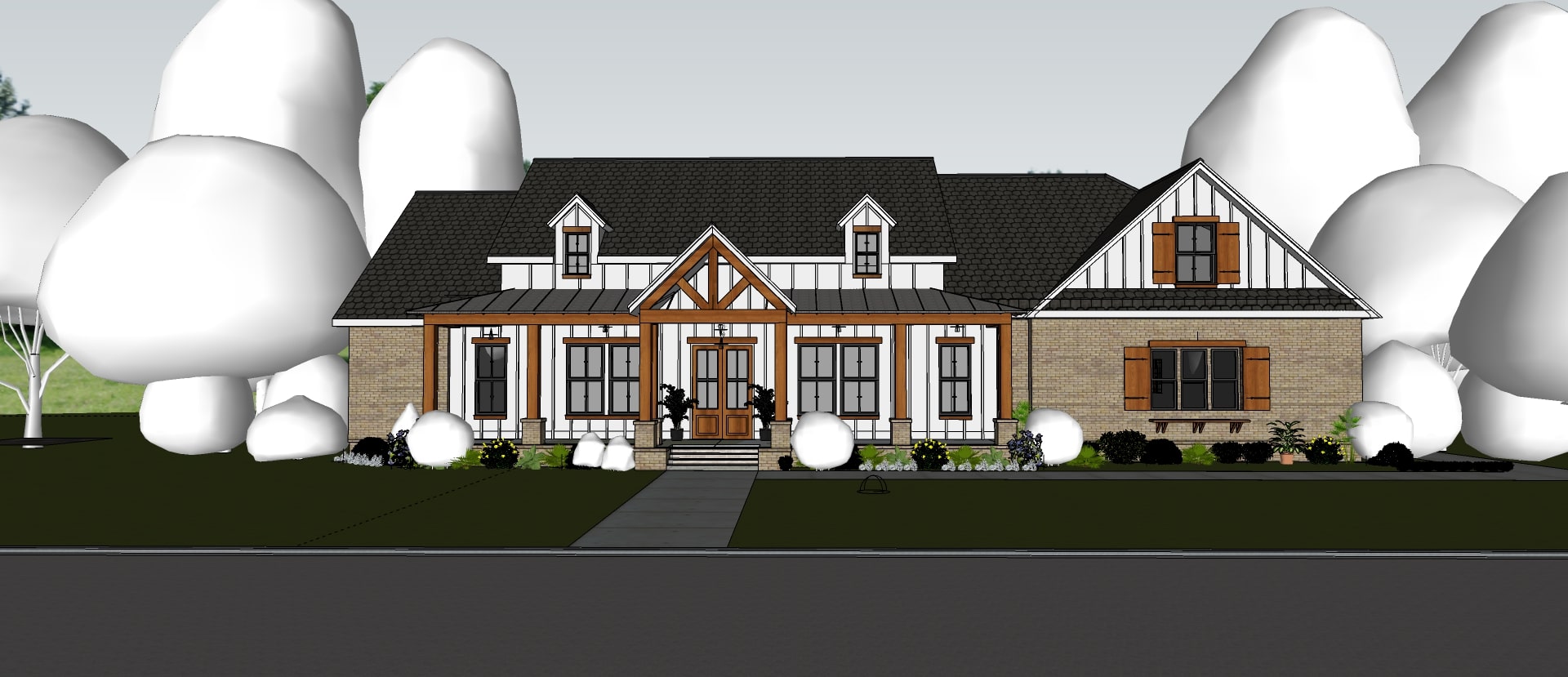In the fast-paced world of construction, precision and efficiency are paramount. Enter 3D SketchUp modeling—a transformative tool that is revolutionizing construction planning. This innovative software allows architects, engineers, and builders to create intricate 3D representations of their projects, facilitating a clearer vision right from the conceptual stages. By enabling detailed visualization, 3D modeling helps teams identify potential issues before breaking ground, saving time and money.
Moreover, it enhances collaboration among stakeholders, ensuring that everyone is aligned with the project’s goals. As construction projects grow in complexity, the need for effective planning tools becomes indispensable.
In this article, we’ll explore how 3D SketchUp modeling services not only streamlines workflows but also elevates overall project outcomes, making it an essential component in modern construction practices. Join us as we delve deeper into the pivotal role of this powerful tool in shaping the future of the industry.
1. Enhanced Visualization
One of the primary advantages of 3D SketchUp modeling is its ability to provide a clear and detailed visualization of projects. Unlike traditional 2D blueprints, 3D models allow stakeholders to see the project from multiple angles and perspectives. This enhanced visualization helps clients, architects, and contractors understand the design intent more effectively, reducing the likelihood of miscommunication and errors during the construction phase.
2. Improved Collaboration
Construction projects often involve multiple stakeholders, including architects, engineers, contractors, and clients. 3D SketchUp serves as a collaborative platform where all parties can contribute to the design process. By sharing a common model, team members can provide feedback, suggest modifications, and address potential issues in real-time. This collaborative approach fosters a sense of ownership and ensures that everyone is on the same page, ultimately leading to a smoother construction process.
3. Efficient Planning and Coordination
3D SketchUp modeling allows for better planning and coordination of various construction elements. With the ability to create detailed models that include structural, mechanical, and electrical components, project managers can identify potential clashes or conflicts before construction begins. This proactive approach minimizes delays and reduces costly rework, ensuring that projects stay on schedule and within budget.
4. Accurate Cost Estimation
Accurate cost estimation is critical in construction planning. 3D SketchUp models can be integrated with cost estimation software, allowing for precise calculations based on the materials and labor required for the project. By visualizing the project in 3D, estimators can identify areas where costs can be optimized, leading to more accurate budgets and financial forecasts.
5. Streamlined Communication
Effective communication is vital in construction planning. 3D SketchUp models serve as a universal language that transcends technical jargon. Whether presenting to clients or discussing with subcontractors, the visual nature of 3D models makes it easier to convey complex ideas. This clarity helps to ensure that everyone involved understands the project’s goals and requirements, reducing the chances of misunderstandings.
6. Enhanced Marketing and Client Engagement
For architects and construction firms, 3D SketchUp modeling can also serve as a powerful marketing tool. High-quality renderings and walkthroughs can be used to showcase projects to potential clients, helping to secure contracts and build trust. Engaging visuals can make a significant difference in client presentations, allowing firms to stand out in a competitive market.
7. Sustainability and Energy Efficiency
As the construction industry increasingly focuses on sustainability, 3D SketchUp modeling can aid in designing energy-efficient buildings. By simulating various design options, architects can analyze factors such as natural light, ventilation, and material usage. This data-driven approach enables the creation of environmentally friendly structures that meet modern sustainability standards.
Future Trends in 3D Modeling for Construction
As technology continues to evolve, the future of 3D modeling in construction looks increasingly promising. One emerging trend is the integration of virtual reality (VR) and augmented reality (AR) with 3D modeling. These technologies allow users to immerse themselves in the 3D model, providing a more intuitive and interactive experience. With VR and AR, stakeholders can conduct virtual walkthroughs of the project, explore different design options, and gain a deeper understanding of the spatial relationships and interactions within the model. This enhanced level of visualization and interaction can lead to more informed decision-making and improved project outcomes.
Another trend is the increasing use of building information modeling (BIM) in conjunction with 3D modeling. BIM is a collaborative process that involves the creation and management of digital representations of the physical and functional characteristics of a building. By integrating BIM with 3D modeling, teams can gain a more comprehensive understanding of the project and its lifecycle. This holistic approach allows for better coordination and communication between different teams and disciplines, ultimately leading to more efficient and effective project delivery.
Artificial intelligence (AI) and machine learning are also poised to play a significant role in the future of 3D modeling for construction. These technologies can be used to automate and optimize various aspects of the modeling process, such as generating design alternatives, identifying potential issues, and predicting project outcomes. By leveraging AI and machine learning, teams can gain valuable insights and make more informed decisions, ultimately improving the quality and success of their projects.
Conclusion
In conclusion, 3D SketchUp modeling is a powerful and transformative tool that is revolutionizing construction planning. By providing detailed and accurate 3D representations of projects, SketchUp helps teams to visualize and analyze designs, identify and resolve potential issues, and enhance communication and collaboration among stakeholders. The benefits of using 3D modeling services in construction are numerous, including improved project outcomes, increased efficiency, and reduced costs.
As technology continues to evolve, the future of 3D modeling in construction looks increasingly promising. Emerging trends such as virtual reality, augment reality, building information modeling, and artificial intelligence are set to further enhance the capabilities and impact of 3D modeling. By staying ahead of these trends and following best practices for implementation and use, construction teams can maximize the benefits of SketchUp and other 3D modeling tools, ultimately leading to more successful and efficient projects.
In the fast-paced and ever-changing world of construction, the need for effective planning tools is more important than ever. 3D SketchUp modeling offers a powerful solution to this need, providing teams with the tools and capabilities they need to plan, design, and execute projects with precision and confidence. As the industry continues to embrace and innovate with 3D modeling technology, the future of construction planning looks brighter than ever.


